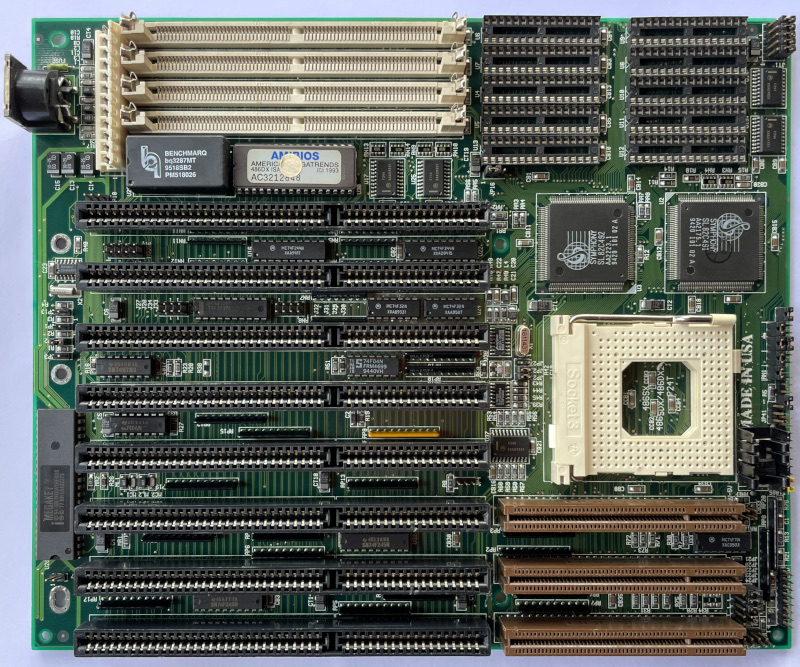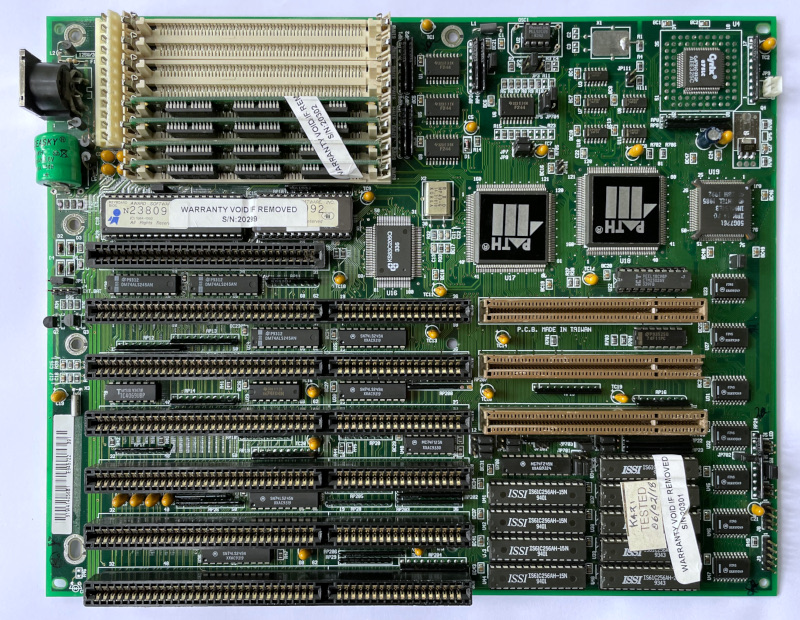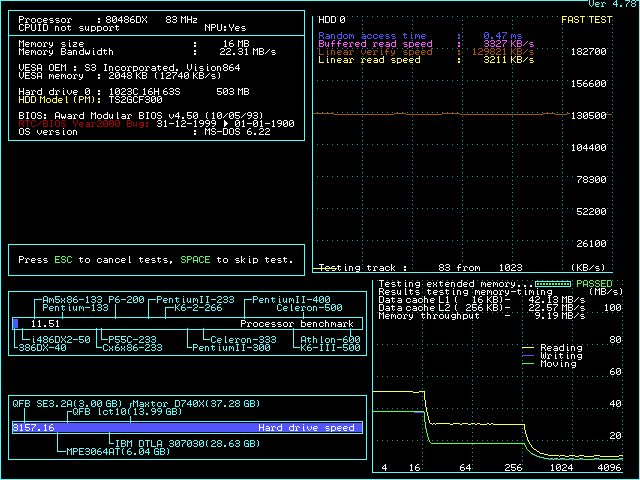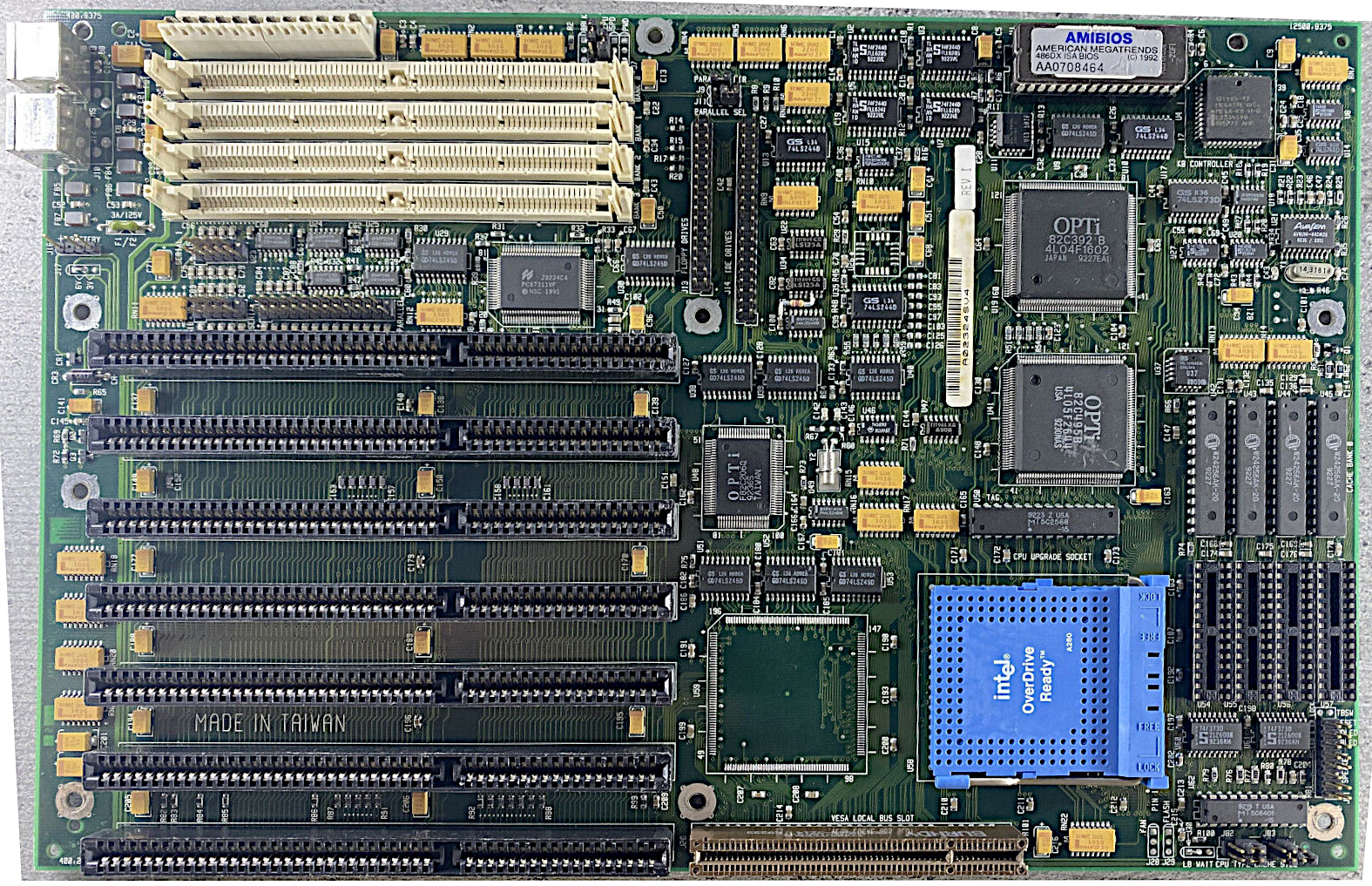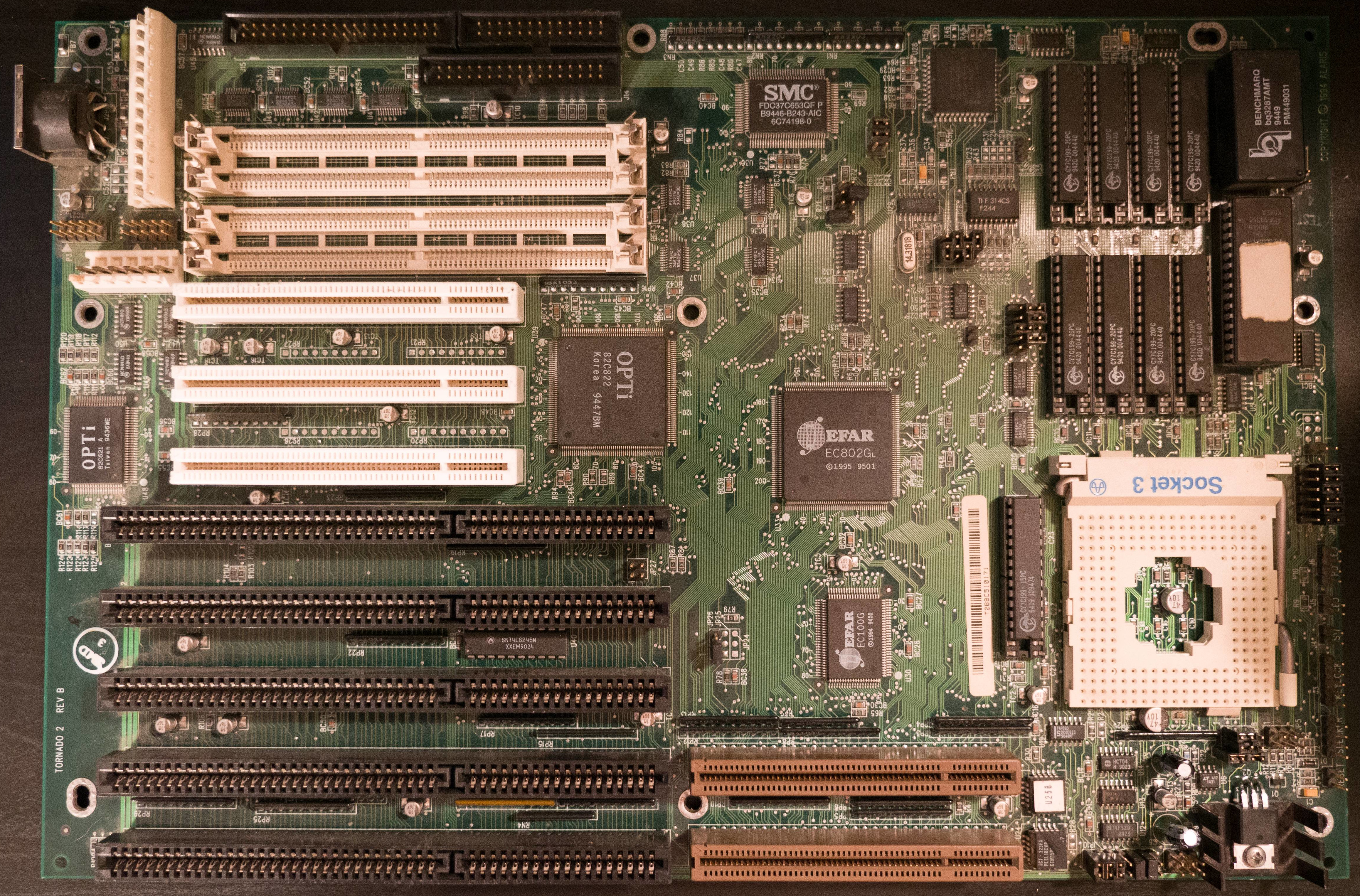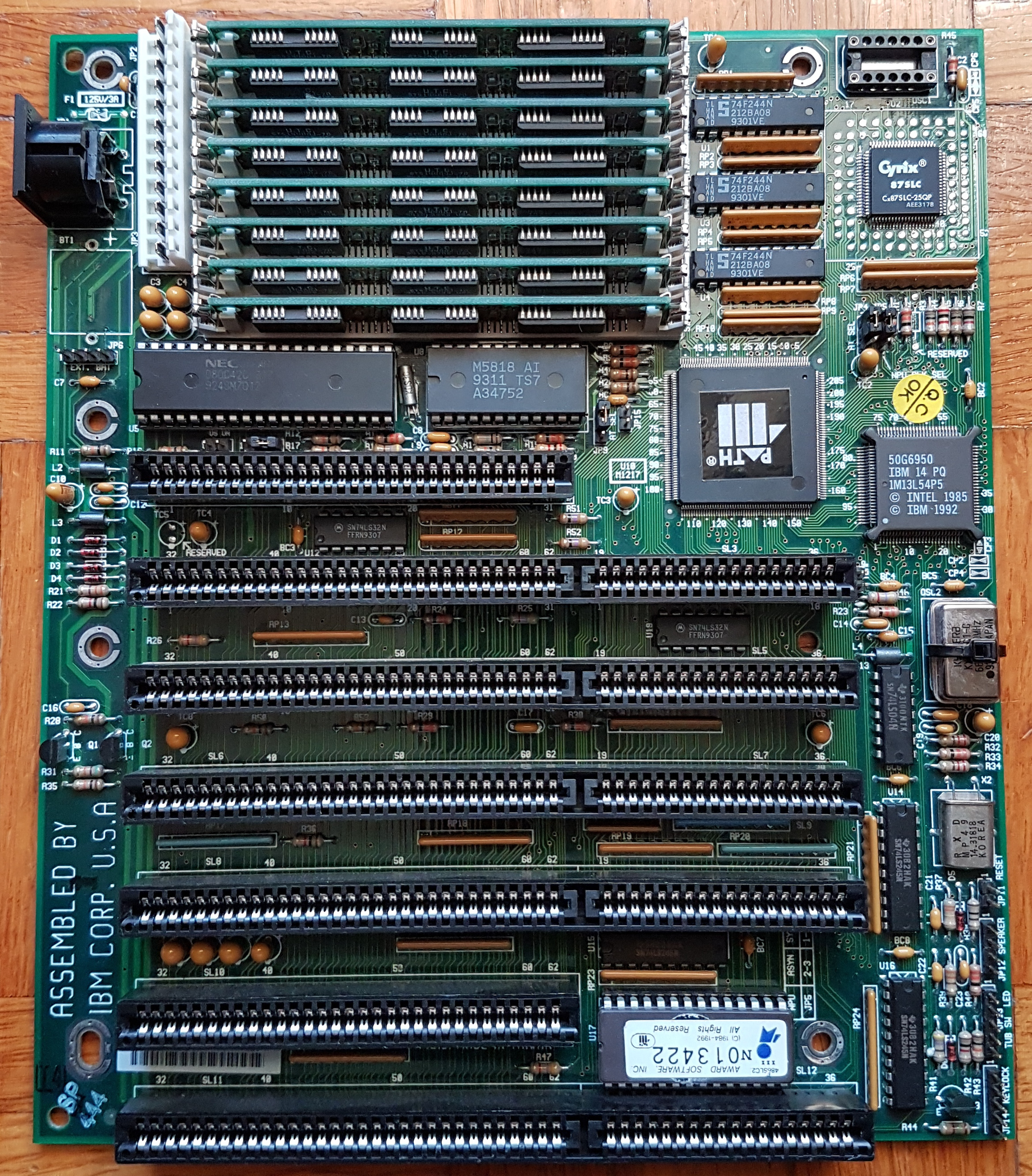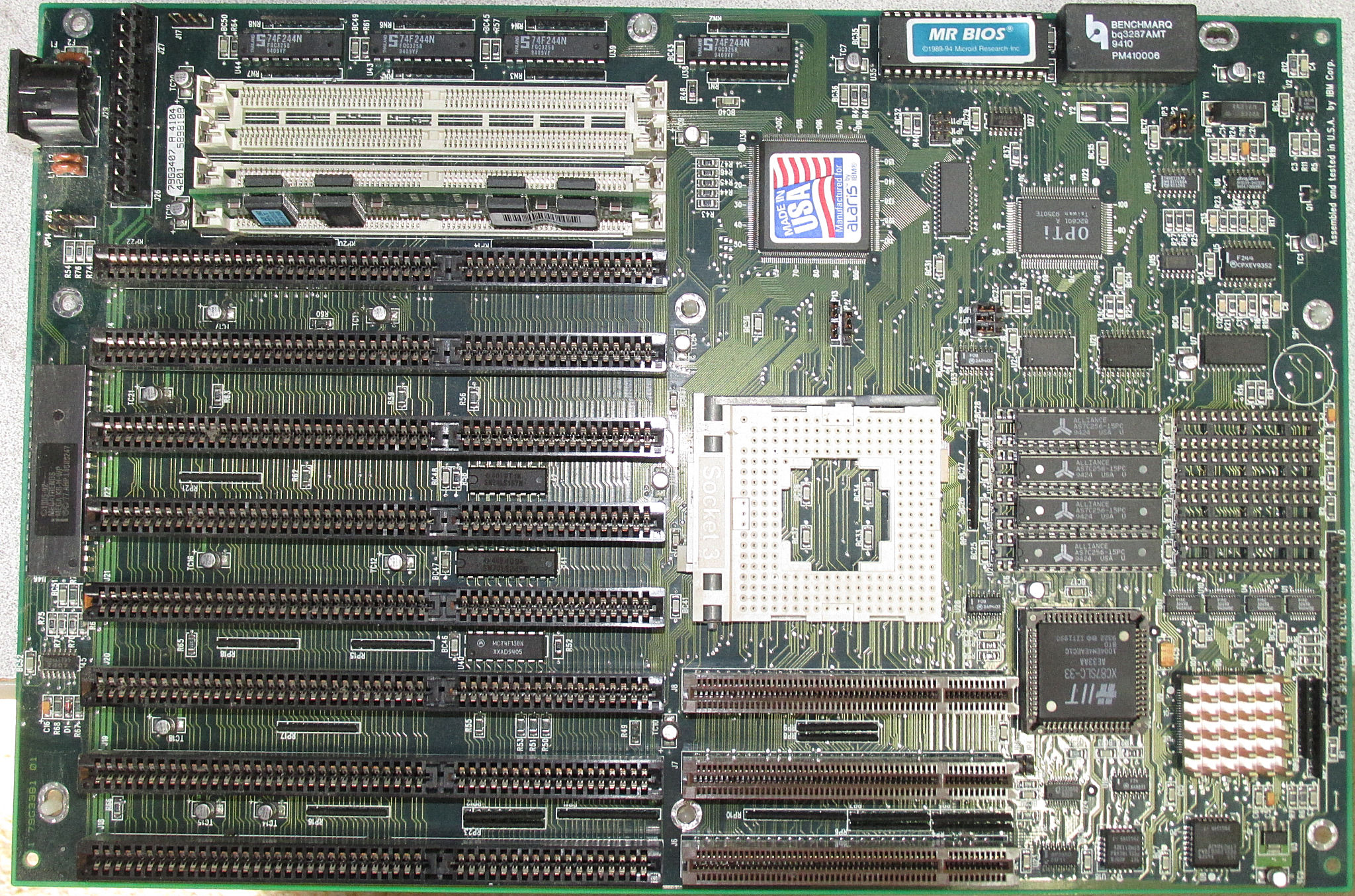Reply 1680 of 2436, by pshipkov
I won't be surprised if am the Young Micro Systems most avid end user to date with many of their 386/486 motherboard models collecting dust nearby.
The interest is entirely based on my curiosity about Symphony Labs silicon which YMS used in their products. Much less about the company YMS itself.
Unfortunately none of their assemblies turned-out exciting so far. They don't respond well to tight BIOS timings and overclocking.
Until now. Well, mostly.
Young Micro Systems VS486G-3VL (VEGA 486 Green PC)
Based on Symphony Labs Wagner (SL82C491, SL82C492).
It is the most feature complete 486 VLB motherboard from the YMS series.
There is even a voltage regulator on board. Crazy ! : )
--- Am5x86 at 160MHz (4x40)
All BIOS settings on max, except CACHE BURST READ CYCLES 2:4 = X-2-2-2 (best is X-1-1-1)
Motherboard is not picky about RAM or level 2 cache chips.
Ark1000VL video cards works well with tight wait states (noting it since this is not always the case).
There is not much more to say really. Things work as expected, except SpeedSys refusing to cooperate and Quake 1 test showing some funny result.
Looks like skewed game clock at play. Otherwise the test completes just fine and the game is playable entirely.

Coretest reports 12207 Kb/sec with Promise EIDE 2300Plus controller (turbo mode + speed 8 ) + CF card.
One sentence conclusion - above average performer.
--- Am5x86 at 200MHz (4x50)
There are 6 jumpers for setting up base frequency, but no configuration results in 60/66MHz. Going with 4x50.
Had to slow things down for complete stability.
CACHE SHORT WRITE CYCLE = NORMAL (best is SHORT)
BURST WRITE CYCLES 2:4 = X-2-2-2 (best is X-1-1-1)
BURST READ CYCLES 2:4 = X-2-2-2 (best is X-1-1-1)
BURST WRITE CYCLE 1 = 3-X-X-X (best is 2-X-X-X)
BURST READ CYCLE 1 = 3-X-X-X (best is 2-X-X-X)
AT BUST CLOCK SELECT = CLKIN/4 (best is /3)
Coretest reports 13523 Kb/sec with Promise EIDE 2300Plus controller (turbo mode + speed 8 ) + CF card.
Not bad at all really.
--- Intel Overdrive P24T at 100MHz (2.5x40), POD100
System is inherently unstable with the modified P24T processor.
Tried hard to improve on that but without success.
---
Despite the POD100 issues, this is the best Symphony Wagner based VLB motherboard i have seen so far.
No hustle, overclocks pretty well, supports 3.45V CPUs.
